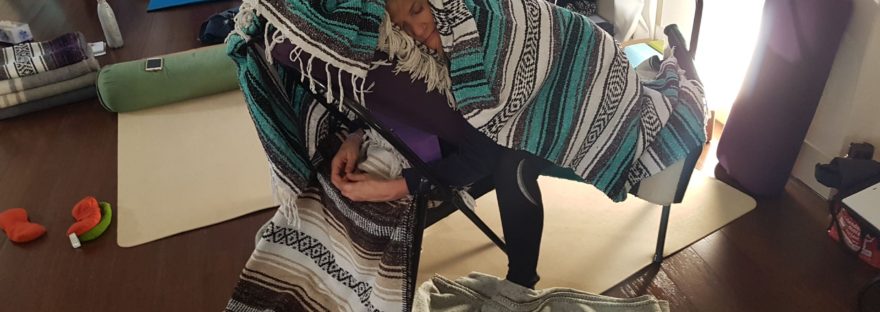Benefits of Yin & Restorative Yoga
There are countless studies, articles and opinion pieces declaring that yoga is good for you. It combines movement with breath, helps us connect with ourselves and gives us some philosophical food for thought, both on and off the mat. But with so many different types of yoga out there to choose from, what makes Yin and Restorative so special?
Yin and restorative yoga both offer similar benefits:
- Deeply relaxes the body
- Stills the mind
- Recalibrates the nervous system
- Promotes the body’s capacity to heal and boosts immunity
- Balances out emotions
- Develops ability for self-inquiry
- Cultivates a sense of self-love and self-compassion
Differences between Yin & Restorative Yoga
Many people use the terms Yin and Restorative yoga interchangeably, possibly due to the fact that they are both passive forms of yoga, but their philosophies are somewhat different.
Yin yoga is a challenging concept to describe in a short paragraph, as it more of a philosophy than a style of yoga; but essentially it follows a Taoist tradition, incorporating Traditional Chinese Medicine meridian theory to the asanas (physical poses). In Yin yoga we play with the concept of an “edge” which has a powerful impact on opening us up to self-inquiry, a concept that is an integral part of the Yin & Juice yoga philosophy.
The asanas are floor based and held for 3-5 minutes to get the most therapeutic benefit for stretching the connective tissue around joints and the deep layers of fascia. The use of asanas combined with awareness of our breath, helps to promote and regulate the flow of Qi (pronounced chi) through specific energy meridians. The concept of Qi is very much intertwined with the yogic concept of prana, or life force.
Restorative yoga is a passive style of yoga which promotes active relaxation. More importantly it teaches us how to surrender and let go. We use lots of props such as bolsters, blankets and eye pillows to completely support the body during the floor based poses. It’s basically burrito yoga. These asanas are held for a minimum of 5 minutes (in some cases for 10-15 minutes to get our bodies into the optimum state for conscious relaxation).
It is my role to guide you deeper into relaxation through each pose and to use the props to cultivate a safe and nurturing space for you to emotionally and spiritually let go. This is why I refer to the yoga space at Yin & Juice as the yoga pillow fort. I want you to be able to connect with the concept of allowing yourself to be fully supported. To learn to surrender.
What is the Yin & Juice style of yoga?
At Yin & Juice we practice a mash up of both Yin and Restorative yoga. The classes are sequenced to gain maximum benefit from both styles and to ensure they complement each other.
Classes at Yin & Juice typically begin with a breathing exercise and meditation, where we set an intention for our practice. Each week we focus on a new theme or explore dharma, which we weave into our yoga practice.
We then move through some Yin poses which help stretch the spine and warm up the body. These poses also allow us time for contemplation and practising non-attachment to thoughts or judgements of self. These poses open us up nicely for the Restorative poses which follow, where we move further into deep rest and relaxation, completing our practice with a nice, long savasana.
There is this concept of “juicy”, in the yoga vernacular (you’ll often hear teachers referring to hip openers such as the pigeon as giving you a “juicy stretch”), which is essentially the delicious sensation of release after a deep stretch. I like to take that concept a step further by linking it to emotional, physical and spiritual freedom. This concept was partly the inspiration behind the name Yin & Juice.
I hope you mofos will come along and experience Yin and Restorative yoga for yourselves. Have a look here for more info on the Yin & Juice yoga pillow fort.
Om shanti preach- Mireille x
